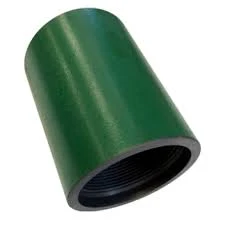- Afrikaans
- Albanian
- Amharic
- Arabic
- Armenian
- Azerbaijani
- Basque
- Belarusian
- Bengali
- Bosnian
- Bulgarian
- Catalan
- Cebuano
- Corsican
- Croatian
- Czech
- Danish
- Dutch
- English
- Esperanto
- Estonian
- Finnish
- French
- Frisian
- Galician
- Georgian
- German
- Greek
- Gujarati
- Haitian Creole
- hausa
- hawaiian
- Hebrew
- Hindi
- Miao
- Hungarian
- Icelandic
- igbo
- Indonesian
- irish
- Italian
- Japanese
- Javanese
- Kannada
- kazakh
- Khmer
- Rwandese
- Korean
- Kurdish
- Kyrgyz
- Lao
- Latin
- Latvian
- Lithuanian
- Luxembourgish
- Macedonian
- Malgashi
- Malay
- Malayalam
- Maltese
- Maori
- Marathi
- Mongolian
- Myanmar
- Nepali
- Norwegian
- Norwegian
- Occitan
- Pashto
- Persian
- Polish
- Portuguese
- Punjabi
- Romanian
- Russian
- Samoan
- Scottish Gaelic
- Serbian
- Sesotho
- Shona
- Sindhi
- Sinhala
- Slovak
- Slovenian
- Somali
- Spanish
- Sundanese
- Swahili
- Swedish
- Tagalog
- Tajik
- Tamil
- Tatar
- Telugu
- Thai
- Turkish
- Turkmen
- Ukrainian
- Urdu
- Uighur
- Uzbek
- Vietnamese
- Welsh
- Bantu
- Yiddish
- Yoruba
- Zulu
Exploring Tubing Crossovers and Their Impact on Oil and Gas Extraction Processes
Understanding Tubing Crossover A Key Concept in Oil and Gas Operations
In the oil and gas industry, efficient drilling operations are paramount to maximizing production and ensuring safety. One of the critical aspects that engineers and technicians must consider is the concept of tubing crossover. This term refers to the transition point where the production casing or tubing in a well intersects with other types of tubulars or formation zones. Understanding tubing crossover is essential for successfully managing well integrity, optimizing production, and minimizing risks associated with drilling operations.
The Importance of Tubing Crossover
When drilling a well, various types of tubulars are used, including casing, production tubing, and liner. Each of these components serves a specific purpose and must work together harmoniously. Tubing crossover primarily affects the flow of hydrocarbons from the reservoir to the surface, and any issues at this intersection can lead to production inefficiencies or even catastrophic failures.
During the drilling process, operators often need to switch from one type of tubular to another — for instance, moving from a larger casing to a narrower production tubing. This transition must be precisely executed to ensure that the seal is intact and that there are no leakages. A poorly designed or improperly executed crossover can create pathways for gas or fluids to migrate outside the wellbore, which poses significant safety risks, including blowouts and environmental hazards.
Managing Tubing Crossover in Well Design
To effectively manage tubing crossover, engineers must consider several factors during the well design phase. One of the primary considerations is the selection of materials. Tubing and casing components need to be made of materials that can withstand the high pressures and corrosive environments typical in oil and gas operations. Common materials include steel and various alloys, which are chosen based on the specific characteristics of the formation being drilled.
tubing crossover

Another important factor is the design of the crossover itself. Engineers often employ specialized tools and techniques, such as packers or bridge plugs, to create a secure seal at the crossover points. These tools act as barriers, preventing any uncontrolled flow of fluids and providing a safe environment for operations.
The Role of Technology in Optimizing Crossover
Advancements in technology have significantly enhanced the efficiency of managing tubing crossover. Modern drilling techniques, such as horizontal drilling and directional drilling, allow operators to navigate complex well paths more accurately. Advanced software and modeling tools enable engineers to simulate various scenarios, assessing potential risks and optimizing designs before actual drilling takes place.
Moreover, the use of real-time monitoring systems plays a critical role in maintaining well integrity at crossover points. Sensors can detect changes in pressure, temperature, and other parameters, allowing for immediate intervention if something goes awry. This proactive approach not only enhances safety but also minimizes downtime, leading to increased production efficiency.
Conclusion
In summary, tubing crossover is a vital concept in oil and gas operations that requires careful consideration during well design and execution. Proper management of this intersection can significantly impact productivity, safety, and the overall success of a drilling project. As technology continues to evolve, the industry can expect improved methods for managing tubing crossover, ultimately leading to more efficient and safer drilling practices. Understanding and effectively managing tubing crossover is not just a technical necessity but a crucial element for the sustainable growth of the oil and gas sector.
-
Tubing Pup Joints: Essential Components for Oil and Gas OperationsNewsJul.10,2025
-
Pup Joints: Essential Components for Reliable Drilling OperationsNewsJul.10,2025
-
Pipe Couplings: Connecting Your World EfficientlyNewsJul.10,2025
-
Mastering Oilfield Operations with Quality Tubing and CasingNewsJul.10,2025
-
High-Quality Casing Couplings for Every NeedNewsJul.10,2025
-
Boost Your Drilling Efficiency with Premium Crossover Tools & Seating NipplesNewsJul.10,2025







